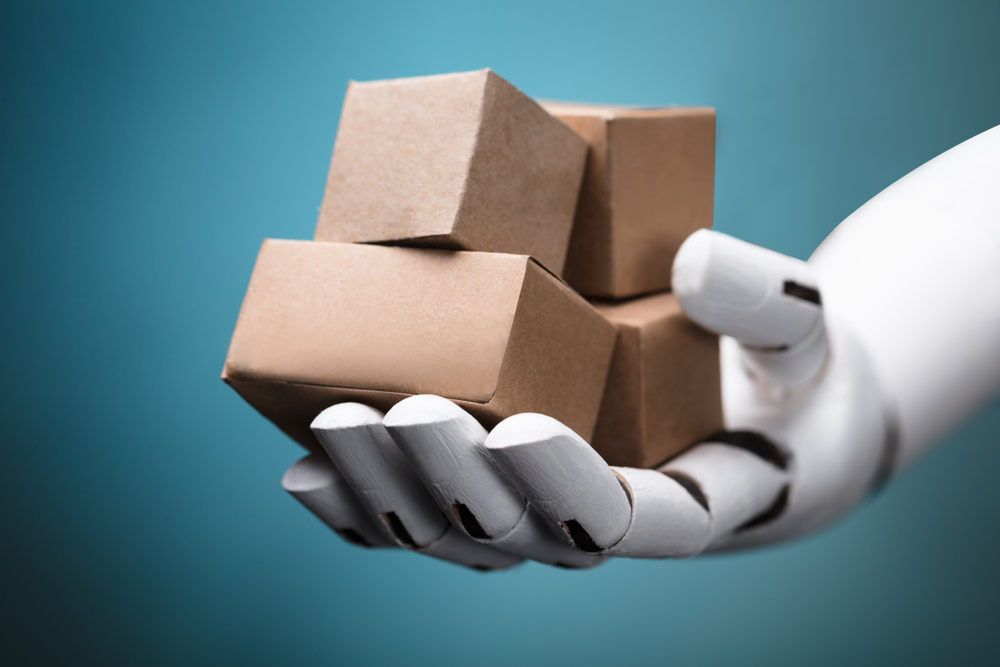Part 2 - Ecommerce Delivery
Retail is currently leading the way in developing artificial intelligence, spending more on projects involving the technology than any other industry. AI is playing a critical role in transforming the eCommerce landscape and this trend for AI automation and robotics is accelerating rapidly in 2019. Retailers are citing such benefits as increased store visits, higher revenues, reduced costs, and more pleasant and personalised customer journeys through the use of AI.
Another significant aspect of retail that AI and robotics are set to transform is online delivery, which is already seeing some serious benefits from the technology.
Amazon Prime set the standards with next day delivery and then raised the bar by offering a 2-hour delivery service, this is shaping the entire delivery landscape with all other online retailers striving to match this. But any logistics manager will tell you, the faster the delivery the more complex the challenge! And that’s why we’re seeing machine learning being integrated widely across the sector.
Warehouse robots & sophisticated automation.
Fulfilling customer orders at the speed that customers expect means making smart use of automation to streamline the process of prepping deliveries. Warehouse operations are becoming extremely sophisticated through the use of AI and robotics with companies like Amazon and Ocado at the cutting edge.
In the U.K. the high tech Ocado fulfilment centre in the unassuming town of Andover was the most advanced in this field. Using 1100 robots to process 65,000 orders per week until an electrical fault caused a massive fire in the facility, causing it to close earlier this year.
The objective of the state of the art depot was to have the most efficient and streamlined process that is also easily scalable.
Warehouse space was maximised by stacking crates 17ft vertically.
The locations of all items were decided by algorithms based on how frequently they needed to be accessed. Above the stacked crates, the thousand-plus robots whizzed around on grids working together as a hive to fulfil orders at lightning speed. The modular nature of the networks allows Ocado to license out the tech to multiple supermarkets easily and they are expanding the tech across countries in Europe and around the world, making it was for brands to offer super-fast online grocery shopping.
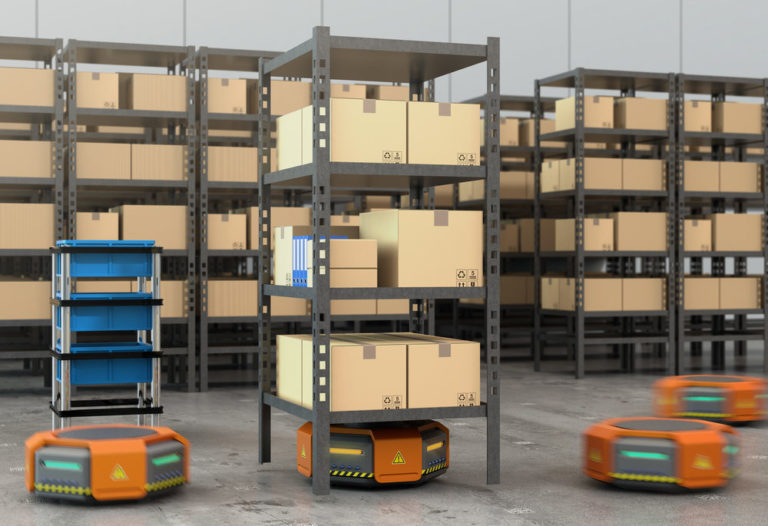
Ever wonder how your Amazon order gets to you so quickly? Amazon has 40 fulfilment centres in Europe and it’s vast distribution network relies on a warehouse robot workforce of 100,000 autonomous vehicles called ‘drives’. The self-drive bots navigate using QR codes printed on the ground as well as internal vision systems to recognise obstacles in order to avoid collisions. The flat-topped vehicles slide under shelves and can lift entire units full of merchandise and ferry them to the work stations where they are required.
An Amazon distribution centre could have a million items inside, it would be impossible for a solely human workforce to match this speed and precision. But despite the presence of robotic technology and machine learning ultimately it is a human that packs your groceries into a bag or your order into a package.
Humans may not be able to lift huge weights onto heights but at present robotic picking arms cannot match human dexterity, and mimic the sophistication of movement that is required for dealing with a bag of oranges! Haveing said that robotic arms are being developed and trained to constantly refine their behaviour.
‘According to Scott Anderson, the company’s director of robotics fulfilment, the point at which an Amazon warehouse is fully, end-to-end automated is at least 10 years away. ‘
Robotics isn’t the only use of AI in supply chain efficiency. For example ‘DHL’s employees use Glass to receive real-time instructions about where items have to be placed on carts, which has increased efficiency by 15%.’ X company
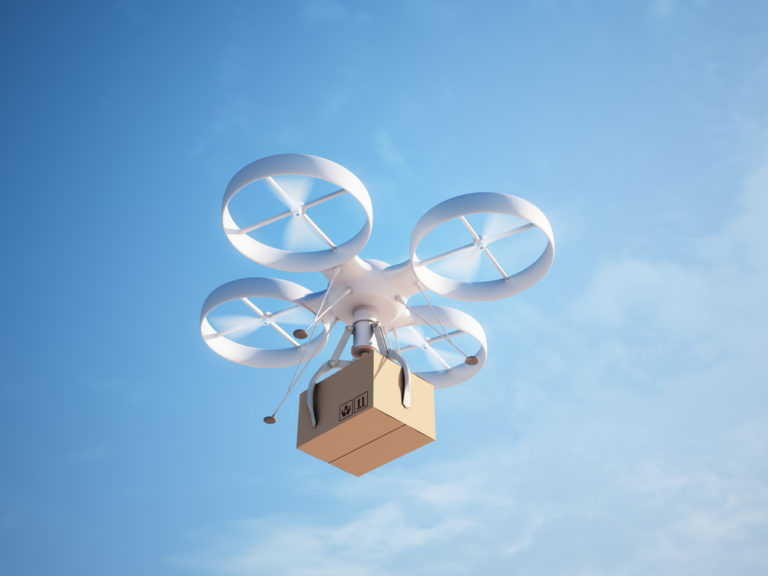
Drones , next level delivery experience.
Automated land and air delivery are expected to play a major part in the future of the eCommerce industry with drone delivery expected to become widely available when ordering from major online retailers.
Both Google and Amazon as well as many independent companies have been testing and developing drone technology for the past 6 years, competing to be the 1st to market. Developing safe and reliable drone technology was a complex challenge as the drones were redesigned to be lighter and carry more weight, navigate better and be quieter. Google Wings drones were approved in April this year to start making deliveries in Canberra, Australia capable of delivering, food, drink and medicine. The self-flying vehicles use machine learning algorithms to detect their environment and avoid obstacles, they fly 400 ft above the ground and can deliver packages to a location the size of a doorstep.
Amazon Prime Air Drones, are also unmanned and fully autonomous, they use smart internal vision to detect its environment, using cameras and thermal imaging. Drones are fully electric vehicles and therefore have zero carbon emissions.
As customer expectations rise and cities become more congested people are simultaneously becoming more demanding and yet more conscious about the environment. On the surface drone delivery provides a fast, cheap and eco-friendly option but people have yet to be convinced that they are safe despite the years of testing. And furthermore people need to be convinced that their privacy remains intact.
Drone deliveries seem set to take off in the immediate future.

27% of greenhouse gas emissions come from transportation
Wings
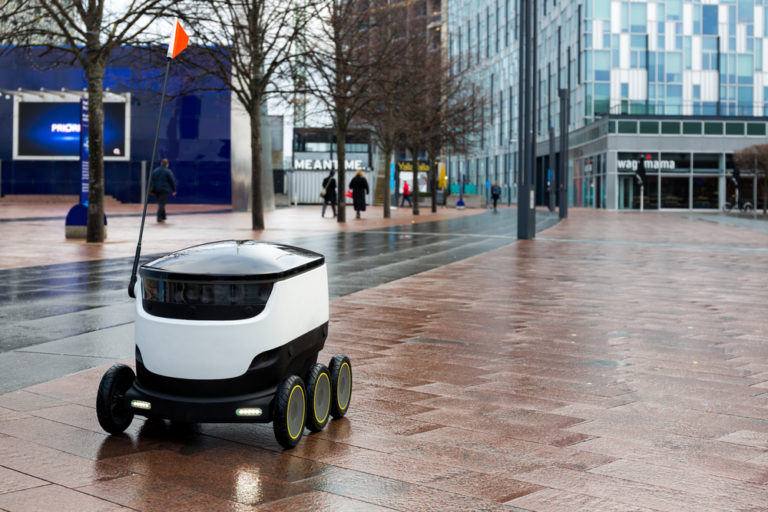
Droids, self-drive delivery vehicles.
Retailers and fulfilment companies are enthusiastic about deploying droids for home delivery. These smart self-driving vehicles can make the lastmile less expensive and far quicker than road vehicles. Environmentalists are also in support due to low energy usage, less than a single light bulb in some cases, and they have zero carbon emissions.
Co op and Tesco have already successfully trialled the six-wheel robot developed by Starship Technologies in Milton Keynes. The company celebrated 50,000 successful commercial deliveries in April this year.
These intelligent little droids can mount pavements, cross roads, avoid traffic, and can even make deliveries in the snow. The success of these trials could bring about a significant shift in the experience of ordering and receiving goods, as fast and efficient same-day and same-hour delivery becomes easy to achieve.
The economical nature of the machines could bring increased profits to retailers as they can offer more and more home delivery. The grocery shoppers in Milton Keynes only pay £1 for the privilege of a robot delivery which is proving ever more popular. Research suggests automated goods delivery will constitute up to 80 per cent of all business-to-consumer deliveries in the future.
What if you owned your own delivery droid? Amazon has just issued a patent for an “autonomous ground vehicle” (AGV), a personal or communally owned robot that would go out and retrieve your online order from the nearest pick-up point or even rendezvous with a delivery truck to bring home your delivery.

What does it mean for jobs and the human touch?
Can technology replace the human touch in the customer experience?
Estimates suggest that 20% of Amazon’s workforce may already be made up of robots. The Office for National Statistics predicts ‘1.5 million people, are at risk of losing their jobs to an automated machine’ with retail named as one of the sectors most dramatically affected. Amazon announced in July plans to create 2000 new jobs in the UK this year. Although the rise in eCommerce continues to create jobs it remains to be seen if it will offset the losses from automation.
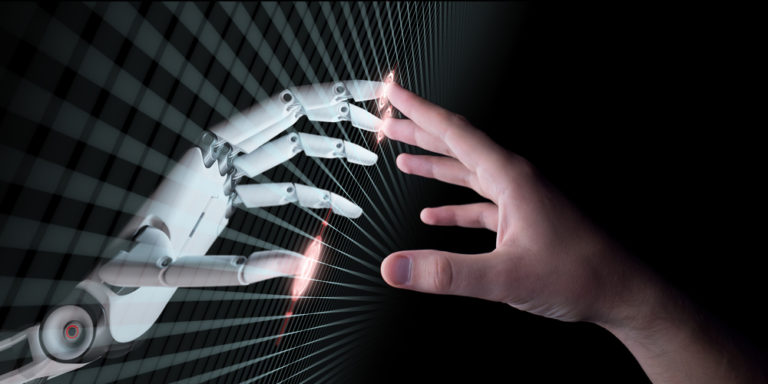
Futuristic technology will continue to enhance the delivery process.
There seems to be no end to the number of ways that technology is enabling high-speed delivery. A fascinating example if the proposed mode of passenger and/or freight transportation, the Hyperloop, being developed by Elon Musk and Richard Branson, as well as other tech companies. The concept involves sending self-propelled transportation pods through low-pressure vacuum tubes at speeds greater than 700 MPH which could see a 3-hour train journey reduced to 30 mins. So a package could potentially get from Amsterdam to Paris in a half an hour via Hyperloop, with the last leg of the journey being made by done or droid. The possibilities seem endless.
Sources: Dezeen, Charged Retail, Apparatus, X Company, The Verge, BBC, The Guardian, Retail Gazette,

AUTHOR
Laura Roche Marketing Executive, Scurri
Laura Roche is a Marketing Executive at Scurri, managing social media and content marketing. Laura shares breaking news in the eCommerce space with our readers as well as sharing insights across the delivery and logistics landscape.
